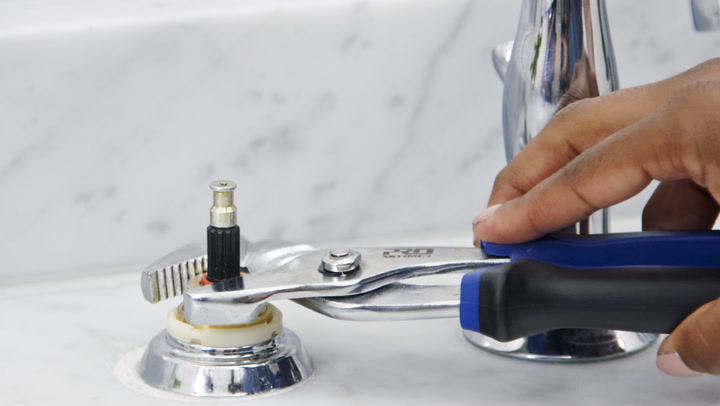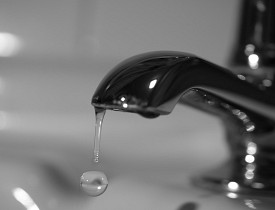What're your thoughts on Water Dripping from Faucet: Why and How to Fix?

Trickling taps may look like a small trouble, but their influence exceeds simply the inconvenience of the audio. From wasting water to sustaining unnecessary monetary prices and health and wellness dangers, ignoring a leaking tap can result in different effects. In this short article, we'll explore why it's important to resolve this common home concern promptly and successfully.
Wastefulness of Water
Environmental Effect
Trickling taps add significantly to water waste. According to the Epa (EPA), a single faucet dripping at one drip per second can throw away greater than 3,000 gallons of water annually. This not only pressures water sources however also influences ecological communities and wild animals depending on them.
Step-by-Step Overview to Repairing a Dripping Faucet
Devices Required
Prior to trying to take care of a dripping tap, collect the needed devices, including a flexible wrench, screwdrivers, substitute parts (such as washing machines or cartridges), and plumber's tape.
Common Tap Issues and Their Solutions
Recognize the kind of tap and the details issue creating the drip. Common issues consist of worn-out washers, corroded shutoff seats, or defective O-rings. Refer to supplier guidelines or online tutorials for step-by-step assistance on repair services.
Financial Prices
Enhanced Water Expenses
Beyond the environmental effect, leaking faucets can pump up water expenses significantly. The gathered waste over time converts right into higher utility expenses, which can have been stayed clear of with prompt repair services.
Prospective Residential Or Commercial Property Damage
Moreover, long term trickling can cause harm to components and surface areas surrounding the tap. Water build-up can trigger discoloration, corrosion, and even architectural problems if left unattended, leading to additional repair expenses.
Health Worries
Mold and Mildew Development
The constant visibility of moisture from a leaking tap produces a perfect environment for mold and mildew and mold growth. These fungi not only jeopardize interior air top quality but likewise position health and wellness threats, specifically for people with respiratory system conditions or allergic reactions.
Waterborne Illness
Stationary water in trickling taps can come to be a breeding place for microorganisms and various other microorganisms, increasing the threat of waterborne conditions. Impurities such as Legionella germs flourish in stagnant water, possibly bring about severe diseases when consumed or inhaled.
DIY vs. Specialist Repair service
Advantages and disadvantages of DIY Fixing
While some may attempt to take care of a dripping tap themselves, DIY fixings include their own collection of challenges. Without correct understanding and devices, DIY efforts can exacerbate the concern or cause incomplete repair services, lengthening the problem.
Advantages of Working With a Professional Plumber
Employing a specialist plumber ensures that the underlying cause of the dripping faucet is attended to efficiently. Plumbing technicians have the proficiency and devices to identify and repair tap concerns efficiently, saving time and minimizing the risk of further damage.
Ecological Duty
Specific Contribution to Conservation
Taking responsibility for fixing leaking taps straightens with more comprehensive efforts towards water conservation and ecological sustainability. Every person's activities collectively make a considerable effect on maintaining valuable resources.
Lasting Living Practices
By focusing on timely fixings and adopting water-saving routines, individuals add to lasting living methods that profit both present and future generations.
Safety nets
Normal Maintenance Tips
To stop leaking taps, carry out regular maintenance such as cleansing aerators, examining for leaks, and changing damaged parts immediately. Additionally, think about mounting water-saving devices or upgrading to extra reliable fixtures.
Value of Prompt Services
Dealing with trickling taps as quickly as they're noticed avoids additional water waste and possible damage, ultimately saving both water and money in the long run.
Impact on Property Value
Understanding of Well-Maintained Residential Property
Preserving a building in good condition, consisting of resolving upkeep problems like dripping taps, boosts its regarded worth and value among possible purchasers or renters.
Impact on Resale Worth
Residences with well-maintained plumbing fixtures, consisting of faucets, command greater resale values in the real estate market. Attending to dripping taps can contribute to a favorable impression during property examinations and negotiations.
Verdict
Addressing a leaking tap goes beyond simple convenience; it's a vital action toward conserving water, minimizing economic costs, and protecting wellness and property. Whether through DIY repair services or specialist assistance, doing something about it to deal with dripping faucets is a small yet impactful way to promote responsible stewardship of resources and contribute to a much healthier, a lot more sustainable future.
How to Fix a Dripping or Leaky Faucet
A leaking faucet is one of the most common problems that homeowners encounter, but it being commonplace doesn’t make it any less annoying. The constant drip drip drip of a leaking bathtub faucet, showerhead, or sink tap can disturb your home’s serenity. Left neglected, a dripping faucet can also result in higher water bills and discoloration or mold growth in your sink or plumbing fixtures.
Fortunately, you don’t have to be a trained plumber to know how to stop a dripping faucet. With some basic tools, replacement parts, and a little patience, leaky faucet repair is a breeze. In this article, we’ll explain what causes dripping faucets and how you can fix them.
What Causes a Leaking Faucet?
Kitchen and bathroom faucets come in all manner of designs, but most involve some combination of valves, O-rings, seals, and washers. The O-ring is usually the weakest link, but any one of these pieces can wear down over time. Heat, moisture, temperature fluctuations, minerals, mold, and movement can contribute to warping and corrosion, breaking the watertight seal. This just comes with the territory of being a homeowner. Everything is always subject to wear and tear, and some component parts of your appliances and fixtures need to be replaced on occasion. At least replacement O-rings are cheap!
More rarely, dripping faucets can be a symptom of excessively high water pressure. Were this the case in your home, you would probably notice that the leak is not isolated to one faucet. Water pressure issues are harder to resolve on your own. We recommend contacting a professional plumber if you suspect your water pressure is too high.
How to Fix a Dripping Faucet
Pipe wrench or monkey wrench Allen wrench set Screwdrivers Old towel or rag Shut off the water.
Before you do anything, you need to turn off the water to keep from drenching your kitchen or bathroom. You should find a valve under the sink and against the wall. Once you’ve turned this valve, try turning the faucet on to confirm that the water source has been cut off.
If you can’t locate your local valve for the faucet you’re working on, you can always shut off the water to the house at the main valve. Of course, this will prohibit anyone from using the sinks, showers, or toilets while you’re working on the faucet that’s giving you trouble.
Plug or block the drain.
You’ll be disassembling the faucet and removing some small bits of hardware. Plug the drain with a stopper or rag to avoid the possibility of a small screw falling into your P-trap.
Take apart the faucet assembly.
There are several varieties of kitchen and bathroom faucets, each with its own manner of assembly. For detailed instructions on how to disassemble your faucet, you can refer to the fixture’s manual or contact the manufacturer. If you know whether you have a ball, disc, cartridge, or compression faucet, you can find detailed schematics online.
In general, you need to begin by removing the faucet handles. You might notice a small screw that you’ll need to remove with a screwdriver or Allen wrench. If you don’t see any visible securing hardware, it’s likely hidden under a decorative cap that can be unscrewed or popped off with flathead screwdriver.
Remove each piece methodically, consulting a schematic when necessary. Take notes or arrange the pieces in such a way to make it easier to correctly reassemble the faucet later.
Remove the cartridge.
Once you’ve removed the handles and securing hardware, you should be able to remove the valve cartridge or stem. Some cartridges will slide right out. Other faucet models will require you to loosen a nut with a pipe wrench before you can remove the valve stem.
Examine the exposed hardware.
With the cartridge or stem removed, inspect the component parts. Check the rubber O-rings for wear and tear. Also examine the seat washer for corrosion or other damage. These pieces are usually the responsible parties for a dripping faucet, but it’s worth inspecting the other component parts while you have the faucet disassembled.
Find replacement parts.
Once you’ve identified which faucet component has failed, find an identical replacement. Your local hardware store should have O-rings, seat washers, and other standard components in stock. If you have a luxury or uncommon faucet, you may have to contact the manufacturer for a replacement part.
It’s a good idea to take your old parts with you to the hardware store so you can compare them with the store’s inventory and be sure you’re purchasing the correct replacement.
Reassemble the faucet.
With your new parts in hand, reconstruct the faucet and handles. Don’t be tempted to overtighten screws or nuts. You might think this could create a better seal, but it can instead damage or bend a delicate part of the assembly and create a new problem for you.
Turn on the water and test the faucet.
The only thing left to do is test your work. Unplug the sink, turn the water back on, and try the faucet. Congratulate yourself on a job well done!
https://www.libertyhomeguard.com/how-to-fix-a-dripping-or-leaky-faucet/

I'm very focused on 4 Common Reasons for a Leaky Faucet and I really hope you liked the new blog posting. Sharing is caring. Helping people is fun. Thanks a lot for your time. Don't forget to stop by our site back soon.